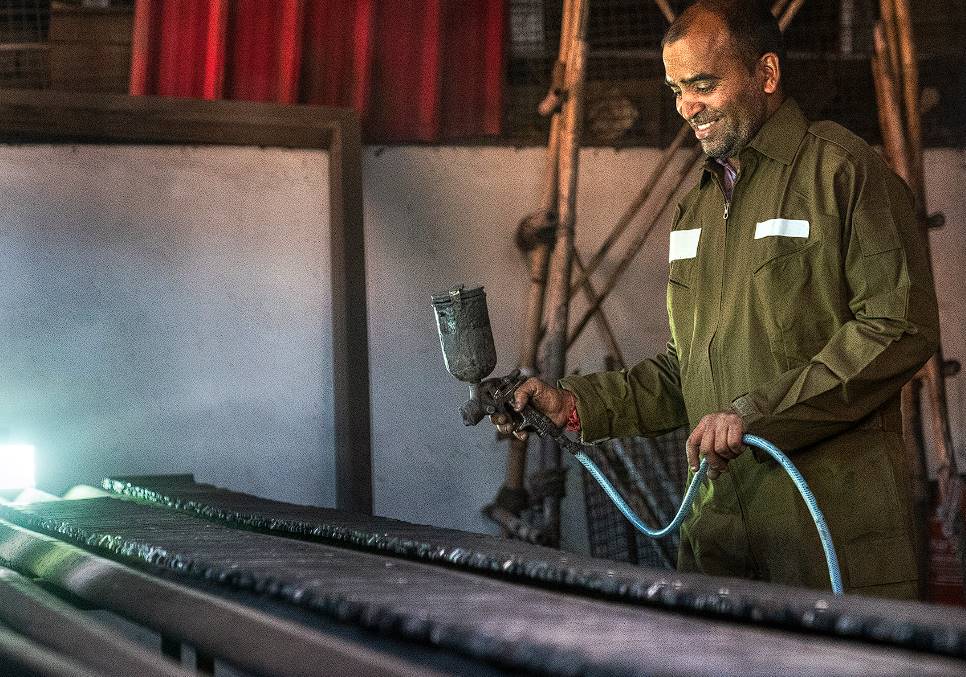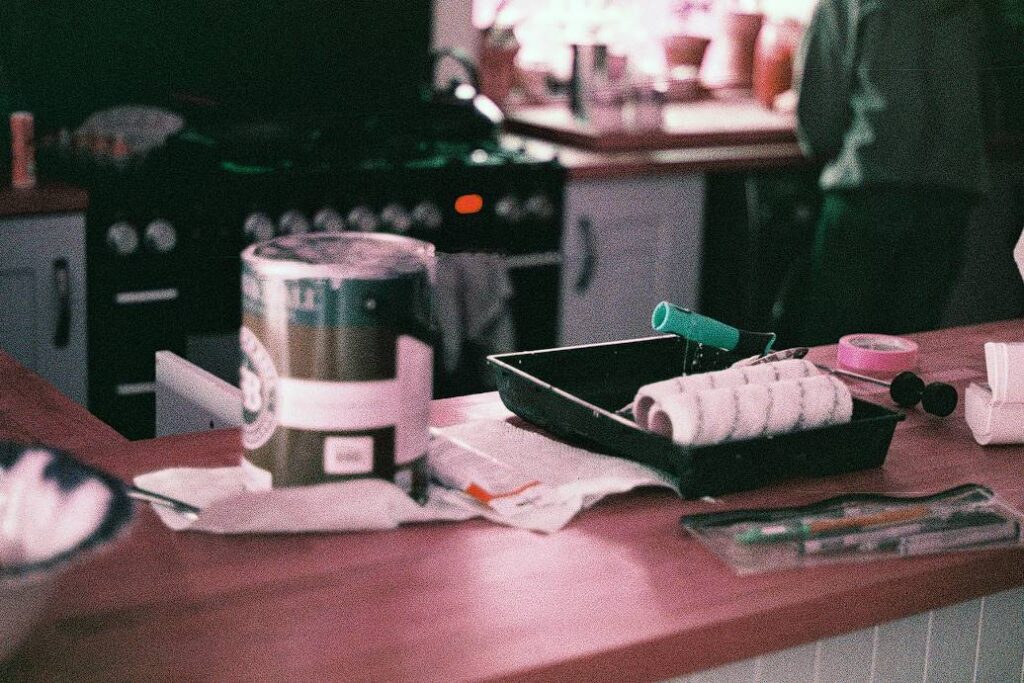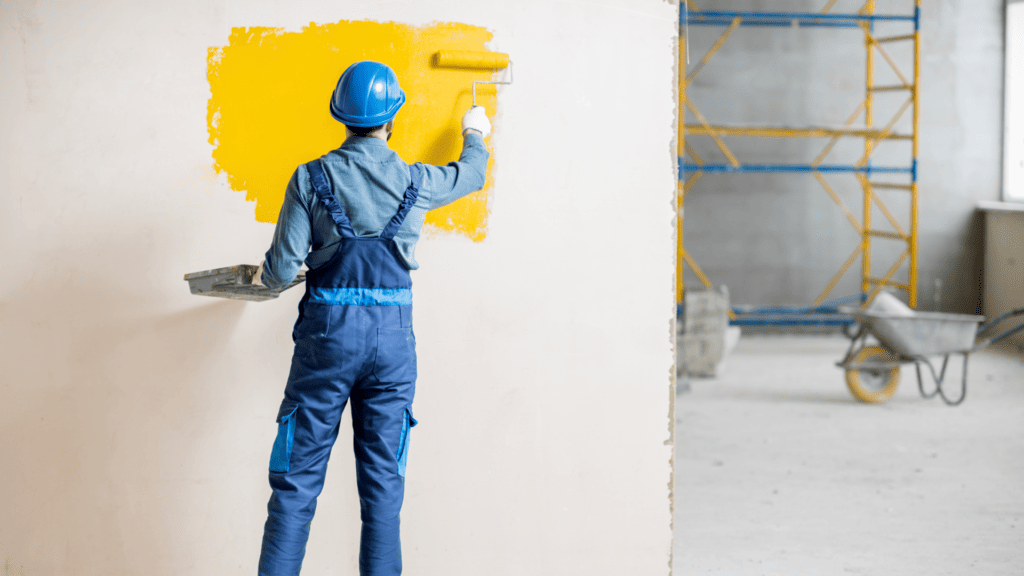Industrial painting is essential for preserving and improving the visual appeal of various structures and machinery used in manufacturing and processing. However, many people face difficulties while attempting industrial painting.
The paint's lack of longevity is the first and foremost issue. Chemicals, high temperatures, and noisy machinery are just a few of the hazards workers in factories face every day. Regular paint may chip or peel in these conditions, necessitating more frequent painting and higher maintenance expenditures.
The application procedure is another problem. A uniform and durable finish can only be achieved through industrial painting and specialised equipment. Uneven coats drips, and early paint breakdown are all possible outcomes of sloppy application.
In addition, choosing the right colour of paint is essential. Specific properties, such as resistance to abrasion, corrosion, or chemicals, are desired in various industrial surfaces. If you choose the wrong paint, it may not protect or function as well as you'd like. However, these challenges may be surmounted with forethought, skill, and creativity.
High-quality industrial paints for the specified environment are vital for addressing durability concerns. These coatings are designed to last longer and provide more protection in harsh environments. To ensure accurate application and long-lasting effects, working with seasoned industrial painting contractors familiar with the industry's specific needs is essential.
Abrasive blasting and other modern techniques can enhance the application process by preparing the surface for better adherence. Also, there will be less room for error or variation when spraying painting equipment because coverage is more uniform and faster.
Industrial painting professionals can evaluate your project's needs and help you choose the right paint. To ensure the efficacy and durability of the paint, they can suggest coatings with the appropriate attributes, such as resistance to corrosion, chemicals, or fire.
Industrial painting problems? You've found the correct location to ask for help. This article is helpful because it sheds light on the issues that frequently arise during industrial painting and provides practical advice for dealing with them. You may improve your industrial painting projects' longevity, efficiency, and efficacy by following the advice given here.
The Importance of Painting Machinery Equipment.
No matter how small or big the plant, industrial machinery is a significant investment and an important asset. Even if buying expensive machinery for your factory is smart, you must maintain it often to keep it running well. Heavy machinery can last longer and perform better in your facility if regularly inspected and maintained.
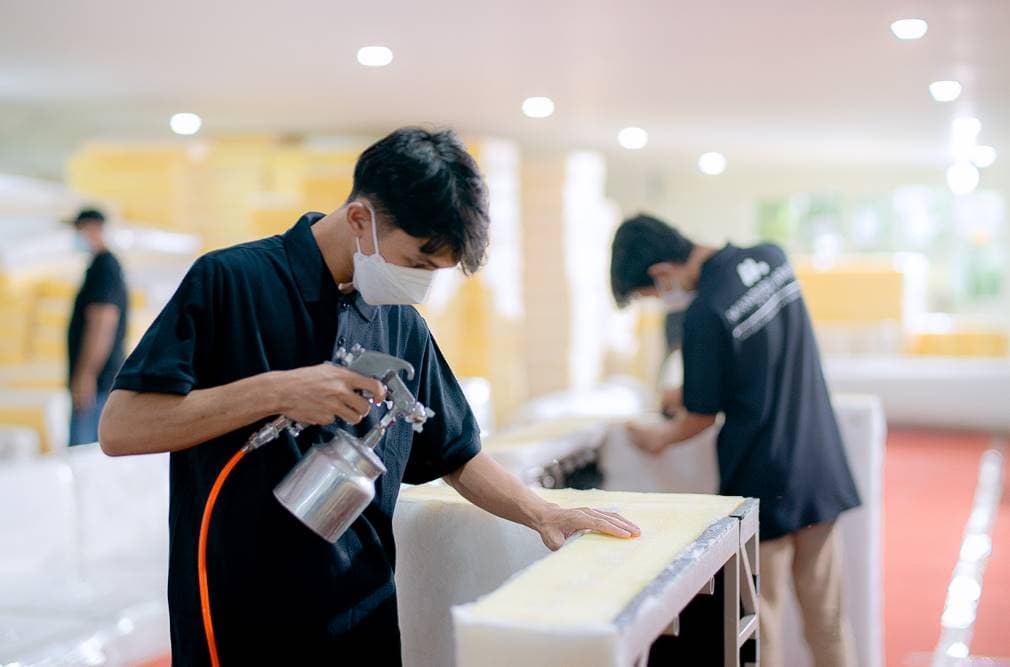
The Incredible Advantages of Using Painting Equipment
The long-term benefits of having machinery painted drive demand for these services in Sydney. Sydney's business owners, aware of the benefits of industrial painting, are increasingly making the transition.
Boost Overall Appearance
Industrial painting's primary advantage is that it improves the visual appeal of your machinery. An industrial facility with broken machinery sends the wrong message to its stakeholders and suppliers. Industrial painting improves your facility's aesthetics and the morale of your workforce, leading to increased output.
Machinery Painting Is Weather Resistant
Industrial painting aims to prevent corrosion, rust, and general deterioration of expensive machinery. Acid rain, rust, and corrosion can seriously harm industrial machinery if it is regularly exposed to bad weather. Modern industrial coatings feature UV blockers that shield against fading and reduce the likelihood of cracking and peeling.
Offers Thermal Protection
Extreme temperature environments are common for industrial machinery. The constant changes in temperature from prolonged contact can quickly damage your equipment.
Increased Efficiency Over Time
Preventative maintenance on machinery reduces the need for expensive repairs and boosts output. As a result, emergency repairs will be far less needed, and the cost of upkeep will be much lower. In addition, you'll save both time and money on cleaning supplies.
Facilitate a Profitable Sale
As technology develops rapidly, you won't always need the same tools. However, when new models and functions are added to industrial equipment, you may need to invest in state-of-the-art heavy gear with cutting-edge specs to keep your business running smoothly and efficiently. Painting your old machinery might give it a new lease on life and extend its usefulness.
How Can We Make Industrial Painting More Secure?
Here are the steps you can take to make industrial painting more secure and in line with regulations:
Educate And Train Workers
Ensure all staff using paint or painting equipment have received thorough training in safety measures, correct equipment operation, and applicable regulations. Keep them up-to-date on best practices by regularly updating their knowledge.
Use Appropriate Personal Protective Equipment (PPE)
Protective equipment (PPE), including safety glasses, respirators, gloves, and clothing, should be worn by all workers to shield them from paint solvents, dust, and fumes.
Proper Ventilation
The concentration of airborne pollutants can be managed, and a safe working environment can be maintained by ensuring adequate ventilation in painting areas. Install local exhaust systems or use mechanical ventilation to keep the air clean.
Implement Hazard Communication
Store paints, solvents, and chemicals in a well-labelled, locked container, as the law requires. Use safety data sheets (SDS) to alert people to risks and provide proper storage, disposal, and use guidelines.
Maintain Tools And Equipment
Make sure that your hoses, spray guns, and compressors are all in good operating order by inspecting them regularly. Accidents or sloppy coating jobs might be caused by broken machinery.
Create Workplace Safety Policies
Create and strictly adhere to operating procedures (SOPs) for all painting tasks. Detailed instructions on preparing surfaces, mixing paint, applying it, and cleaning up should be included. Educate your staff on these policies, and keep a close eye on their adherence.
Conduct Regular Safety Inspections
It's important to conduct regular inspections of the painting area and equipment to spot any possible dangers or areas for improvement. Then, handle problems as soon as possible to avoid mishaps and infractions.
Make Sure Your Waste Is Managed Correctly
Create a plan for the environmentally responsible disposal of leftover paint, unused containers, and outdated machinery. Promote environmentally responsible practices and follow all applicable local legislation to dispose of hazardous waste.
Enforce and Monitor Compliance
Set up a mechanism to meet all safety and legal standards. Then, check for compliance via regular audits and inspections to address problems quickly.
Foster A Safety Culture
Encourage workers to report dangers, near misses, and accidents to foster a safe working environment for everyone. Encourage safe actions by offering rewards and stressing the significance of safety and compliance in your communications. To keep your industrial painting operations safe and legal, you must always be up-to-date on the field's latest standards, laws, and best practices.
What Are The Industrial Painting Techniques and Considerations?
Painters employ specialised methods and components to provide an efficient and long-lasting paint job in an industrial setting. Some important strategies and factors are outlined below:
Surface Preparation
Successful industrial painting requires meticulous surface preparation. Preparing a surface for painting requires ensuring it is clean, degreased, and free of any pollutants, such as rust or old paint.
Priming
Priming before painting increases the paint system's adherence, corrosion resistance, and longevity. The substrate and final paint system will determine which primer is best.
Paint Selection
In industrial settings, it is crucial to use the proper paint. Substrate material, environmental factors (chemicals, humidity, temperature), durability needs, and rules and regulations (e.g., VOC limitations) should all be considered.
Application Methods
Industrial painting employs various application techniques, including brushing, rolling, spraying, and dipping. How it's done is determined by the object's size and intricacy, the type of finish you want, and how efficiently you need it done.
Spraying Techniques
Due to its speed and consistency, spray painting is frequently utilised in commercial and industrial settings. Several methods can be used to get the job done, including electrostatic spraying, airless spraying, and air-assisted airless spraying.
Environmental Considerations
The paint used in factories must be safe for the environment. Therefore, all paint products must be handled and disposed of correctly, and VOCs must be contained and safety regulations followed.
Drying and Curing
The paint's full potential can only be realised after sufficient time to dry and cure. Therefore, environmental conditions like humidity, temperature, and ventilation must be managed to guarantee adequate drying and curing.
Quality Control
The durability of the paint system can be guaranteed through routine checks and quality controls. This entails monitoring film thickness, adhesion, colour uniformity, and presentation.
Maintenance
Preventing the deterioration of painted surfaces on industrial equipment sometimes necessitates regular maintenance. However, the paint system's durability can be improved through routine maintenance, including inspections, touch-ups, and the application of new protective coatings.
Safety Precautions
Dangers such as hazardous gases, flammable materials, and enclosed areas are present in industrial painting. Therefore, workers and the environment need to be safeguarded by having access to appropriate PPE, ventilation systems, and safety processes.
Learn About the Varieties of Coatings Used in the Industry
Industrial coatings can be found almost anywhere. They protect against deterioration and corrosion while also adding visual appeal to whatever they're covering.
Carefully chosen industrial coatings increase the durability and longevity of manufactured goods while also enhancing their visual appeal. Almost any material can be coated, including metals, wood, plastics, composites, glass, leather, and leather. Almost any material used to make an original equipment manufacturer product can have a protective industrial coating applied to it.
Industrial coatings are typically applied during the final stages of manufacturing. The coating substance was created specifically for finishing, so it protects and reinforces their high-value OEM product. There is a wide range of possible characteristics for an industrial coating. You and your formulator can work together to get the best possible results. Make sure your product can be used by technicians during the company's implementation phase.
Here is a quick rundown of OEM (original equipment manufacturer) industrial coatings that feature high-performance polymers. Both traditional solvent and water-based systems are suitable for the formulation of these polymers. Below, we detail a few of the many applications of each:
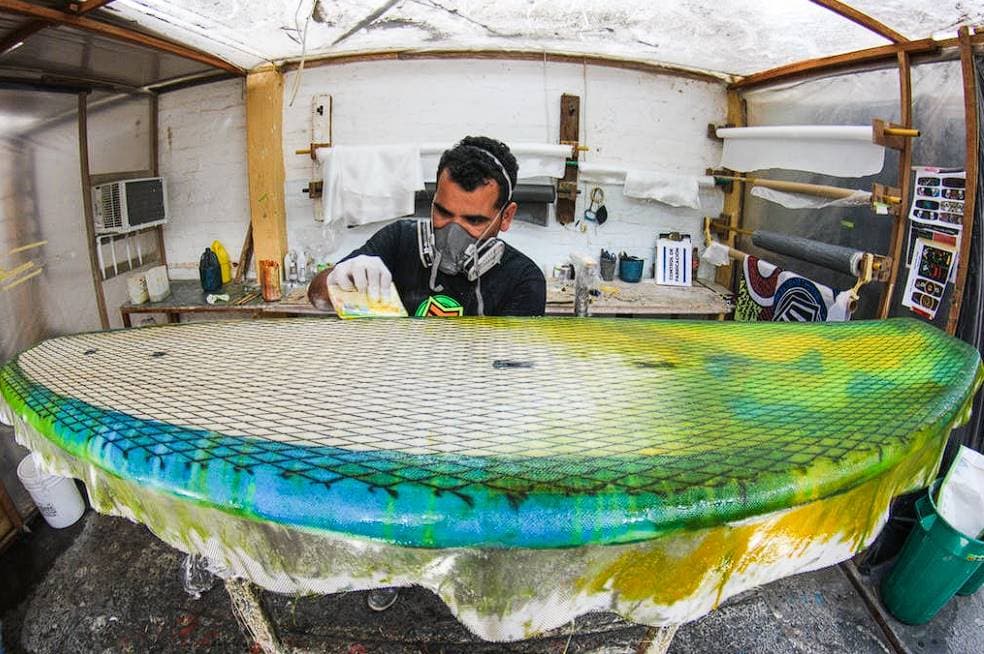
Polyurethane Coatings
Manufacturers frequently use polyurethane coatings as protective topcoats over other specially formulated industrial primers. Polyurethanes can also be used to make products that are harder to break and last longer before showing signs of wear and tear.
These finishes can be polished to a high gloss while still retaining their original colour. Aliphatic polyurethane coatings are highly resistant to environmental factors and ultraviolet light. Outdoors, these coatings perform admirably.
Aromatic polyurethanes are resistant to moisture and water, but they will fade in direct sunlight. This makes these finishes appropriate for use inside. Workers applying two-component polyurethanes must wear protective gear, as is the case with many other chemical operations. They are also available in low-VOC variants.
Epoxy Coatings
These coatings typically consist of an epoxy polymer and a curing agent based on amines. Envision combining the contents of two tubes of epoxy glue to form an extremely secure bond. The versatility of epoxies' formulation allows for a wide variety of properties. This gives consumers access to a specialised coating that can withstand the abuse of a wide range of environments.
The adhesion of epoxy coatings to many different materials is very good. Epoxies are extremely resistant to wear and the elements because of this. Epoxy coatings outperform all competitors in durability and heat resistance. When manufactured correctly, epoxy compounds can remain functional even when exposed to hundreds of degrees Fahrenheit.
Epoxy solutions with two or even three components are frequently used. Zinc primer is frequently requested by consumers as a first line of defence against corrosion. Epoxy would be applied on top of this primer. The superior aesthetics and performance of a polyurethane topcoat make it a viable option for manufacturers as part of a three-part system that also includes a zinc base and an epoxy binder.
Alkyd Coatings
Alkyds are a reliable material for industrial and OEM coatings. When applied to properly primed surfaces, alkyd coatings offer protection from the elements. They're flexible enough to be optimised for use above or below ground, as well as in water.
Formulators can create unique alkyd coatings by altering the formulation's base ingredients. Due to the oxygen permeability requirements of alkyd coatings, drying time may be longer than with other coatings. Therefore, it is common practise to employ heat in order to speed up the chemical curing process.
Zinc-Rich Coatings
These top-tier paints use zinc dust, a rust and corrosion-preventing pigment. Most organic zinc coatings use epoxy or polyurethane resin as their binder, which is suitable for the high quality pigments used. Applying a zinc coating to steel prevents corrosion by acting as both a galvanic and polymeric barrier. Coatings with a high zinc content are also extremely durable and impervious to scratches and wear.
Acrylic Coatings
Among the many advantages of acrylic coatings are their fast drying time and ability to produce a high gloss. Use them as primers to improve adherence. Acrylics are typically used because they require fewer components and can improve the corrosion resistance of the coated object.
Conclusion
Industrial painting is essential for preserving and improving the visual appeal of various structures and machinery used in manufacturing and processing. However, many people face difficulties due to lack of longevity, application procedure, and choosing the right colour of paint. To ensure accurate application and long-lasting effects, working with seasoned industrial painting contractors is essential. Abrasive blasting and other modern techniques can enhance the application process, and industrial painting professionals can evaluate the project's needs and help choose the right paint. The importance of painting machinery equipment is also important, as it must be maintained often to keep it running well.
The long-term benefits of having machinery painted are numerous. It improves the visual appeal of machinery, is weather resistant, offers thermal protection, increases efficiency over time, and facilitates a profitable sale. To make industrial painting more secure and in line with regulations, business owners should educate and train workers, use appropriate personal protective equipment (PPE), and install local exhaust systems or mechanical ventilation. Additionally, they should regularly update their knowledge in safety measures, correct equipment operation, and applicable regulations. Industrial painting requires specialised methods and components to provide an efficient and long-lasting paint job.
To ensure safety and legal compliance, painters must store paints, solvents, and chemicals in a well-labelled, locked container, maintain tools and equipment, create workplace safety policies, conduct regular safety inspections, make sure waste is managed correctly, enforce and monitor compliance, foster a safety culture, and be up-to-date on the field's latest standards, laws, and best practices. Surface preparation, priming, paint selection, and application methods must all be considered. Industrial painting is a process that involves spraying techniques, environmental considerations, drying and curing, quality control, maintenance, and safety precautions. Coatings are used to protect against deterioration and corrosion while also adding visual appeal. Almost any material can be coated, and they are typically applied during the final stages of manufacturing.
There is a wide range of possible characteristics for an industrial coating, and both traditional solvent and water-based systems are suitable for the formulation of these polymers. Polyurethane coatings are used as protective topcoats over other industrial primers, making products harder to break and last longer. Aliphatic polyurethane coatings are highly resistant to environmental factors and ultraviolet light, while aromatic polyurethane coatings are resistant to moisture and water, but fade in direct sunlight. Epoxy coatings consist of an epoxy polymer and a curing agent based on amines, offering a wide variety of properties and outperforming competitors in durability and heat resistance. Zinc primer is a first line of defence against corrosion, and epoxy is applied on top.
Alkyd coatings are reliable and flexible, and zinc-rich coatings use zinc dust as a rust and corrosion-preventing pigment. Acrylic coatings have fast drying time and high gloss, and are used as primers to improve adherence.
Content Summary
- Industrial painting is crucial for preserving and enhancing the visual appeal of structures and machinery in manufacturing.
- Regular paint may chip or peel due to chemicals, high temperatures, and noisy machinery, leading to higher maintenance costs.
- Industrial painting requires specialized equipment and proper application to achieve a uniform and durable finish.
- Choosing the right paint color and properties is essential for protecting industrial surfaces from abrasion, corrosion, and chemicals.
- High-quality industrial paints designed for harsh environments offer longer-lasting protection.
- Working with experienced industrial painting contractors familiar with specific industry needs is vital for accurate application and durability.
- Abrasive blasting and modern techniques can improve surface preparation and paint adherence.
- Industrial painting professionals can help choose the right paint and coatings for specific needs, such as resistance to corrosion, chemicals, or fire.
- Industrial painting improves the overall appearance of machinery, boosting aesthetics and workforce morale.
- Industrial painting protects machinery from corrosion, rust, and general deterioration caused by bad weather.
- Industrial painting provides thermal protection for machinery in extreme temperature environments.
- Regular maintenance through industrial painting reduces the need for expensive repairs and increases efficiency.
- Painting old machinery can extend its usefulness and facilitate a profitable sale.
- Educating and training workers in safety measures and best practices is essential for secure industrial painting.
- Appropriate personal protective equipment (PPE) should be worn by workers to protect them from paint solvents, dust, and fumes.
- Adequate ventilation is necessary to maintain a safe working environment during industrial painting.
- Hazard communication, proper storage, and disposal of paint, solvents, and chemicals are important for safety.
- Regular inspection and maintenance of tools and equipment are necessary to prevent accidents and ensure proper coating.
- Creating workplace safety policies and adhering to standard operating procedures (SOPs) is crucial for safe painting tasks.
- Regular safety inspections help identify and address potential dangers in the painting area.
- Proper management and disposal of paint waste and hazardous materials are important for environmental responsibility.
- Compliance with safety and legal standards should be enforced and monitored through audits and inspections.
- Fostering a safety culture encourages workers to report dangers and promotes safe actions.
- Surface preparation is critical for successful industrial painting, including cleaning, degreasing, and removing pollutants.
- Priming before painting enhances adherence, corrosion resistance, and longevity of the paint system.
- Paint selection should consider substrate material, environmental factors, durability needs, and regulations.
- Industrial painting employs various application methods, such as brushing, rolling, spraying, and dipping.
- Spray painting techniques, including electrostatic spraying, airless spraying, and air-assisted airless spraying, offer speed and consistency.
- Industrial coatings should be safe for the environment and follow proper handling and disposal practices.
- Regular maintenance, quality control, and the use of protective coatings help prevent deterioration of painted surfaces on industrial equipment.
Frequently Asked Questions
There are several types of paint coatings, including but not limited to:
- Water-based paint: This type of paint uses water as a solvent and is environmentally friendly. It dries quickly and is commonly used for interior walls and ceilings.
- Oil-based paint: This paint uses an oil or alkyd-based solvent and provides a durable and glossy finish. It takes longer to dry and is often used for trim, doors, and furniture.
- Latex paint: Also known as acrylic paint, latex paint is water-based and offers good adhesion and flexibility. It is commonly used for both interior and exterior applications.
- Enamel paint: This type of paint provides a hard, glossy, and durable finish. It can be oil-based or water-based and is often used for metal surfaces, such as appliances and automotive parts.
- Epoxy paint: Epoxy coatings are made from a mixture of resin and hardener, resulting in a tough and chemical-resistant finish. They are commonly used for concrete floors, countertops, and industrial applications.
- Chalk paint: Chalk paint is known for its matte, velvety finish and excellent adhesion to various surfaces. It is often used for furniture refinishing and creating a vintage or distressed look.
- Spray paint: Spray paint comes in aerosol cans and allows for easy and even application. It is commonly used for quick touch-ups, graffiti, and small projects.
These are just a few examples of paint coatings available, and the specific options can vary depending on the intended application and desired finish.
A 3-coat paint system consists of a primary coat, an intermediate coat, and a top coat of a color or finish typically specified by the end user.
Paint has a wide range of applications across various industries and purposes. Some common applications of paint include:
- Decorative purposes: Paint is extensively used for decorating and enhancing the aesthetic appeal of surfaces. It is commonly applied to interior and exterior walls, ceilings, trim, doors, and furniture to create desired colors, patterns, and finishes.
- Protection: Paint provides a protective barrier against environmental factors such as moisture, sunlight, heat, and corrosion. It helps to prevent damage and deterioration of surfaces, extending their lifespan. This protective function is crucial for surfaces like metal structures, fences, vehicles, and industrial equipment.
- Identification and signage: Paint is often used for marking and identification purposes. It is employed in road markings, parking lot lines, safety signs, and signals. Paints with reflective properties are used for enhancing visibility in low-light conditions, such as on highways and airport runways.
- Industrial applications: In industrial settings, paint serves various purposes such as anti-slip coatings on floors, chemical-resistant coatings for tanks and pipelines, and protective coatings for machinery and equipment.
- Artistic and creative expressions: Paint is a fundamental medium for artistic expression and creativity. Artists use different types of paints, such as acrylics, oils, watercolors, and gouache, to create paintings, murals, illustrations, and other forms of visual art.
- Preservation and restoration: Paint is used in the preservation and restoration of historical buildings, monuments, and artifacts. It helps to protect and revive architectural features, artwork, and cultural heritage.
Industrial arts is an educational program that features the fabrication of objects in wood or metal using a variety of hand, power, or machine tools. Industrial Arts are commonly referred to as Technology Education.
Industrial painting projects often require the expertise of professional painters who are experienced in working with specialized coatings, surface preparation techniques, and safety protocols. Professionals possess the knowledge and skills necessary to select the appropriate coatings, ensure proper application, adhere to safety regulations, and deliver high-quality results. Hiring professionals is recommended to achieve optimal performance, longevity, and cost-effectiveness in industrial painting projects.

